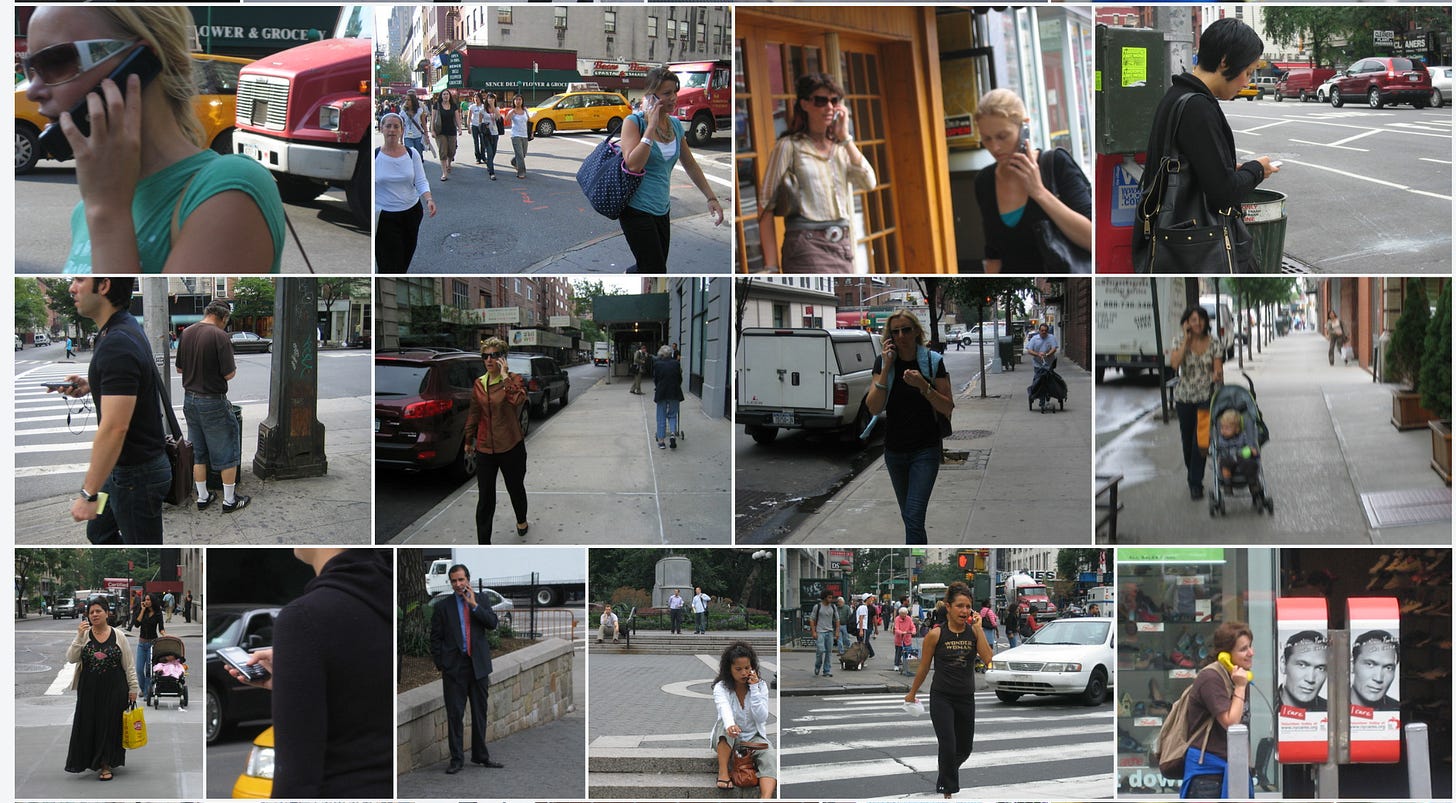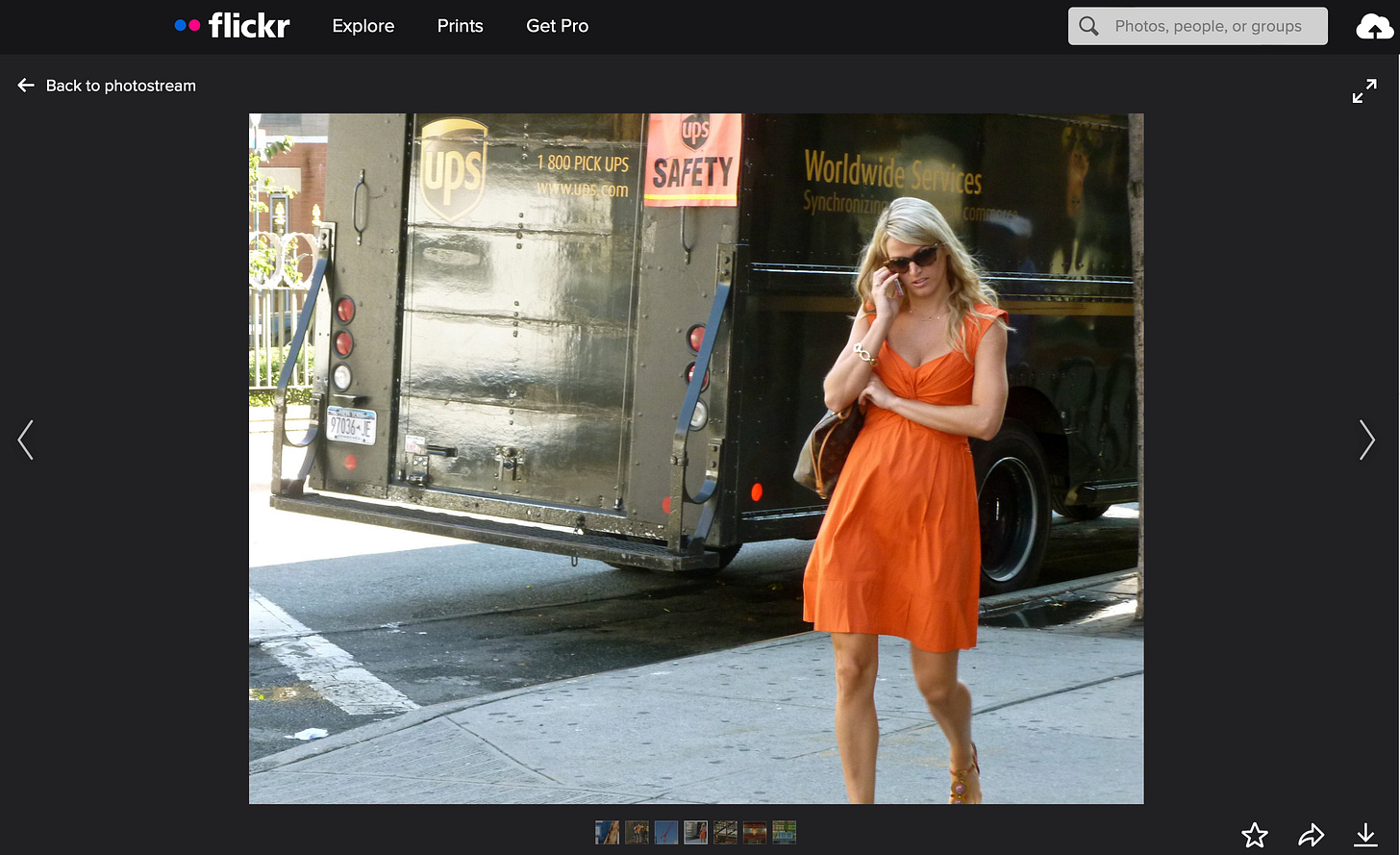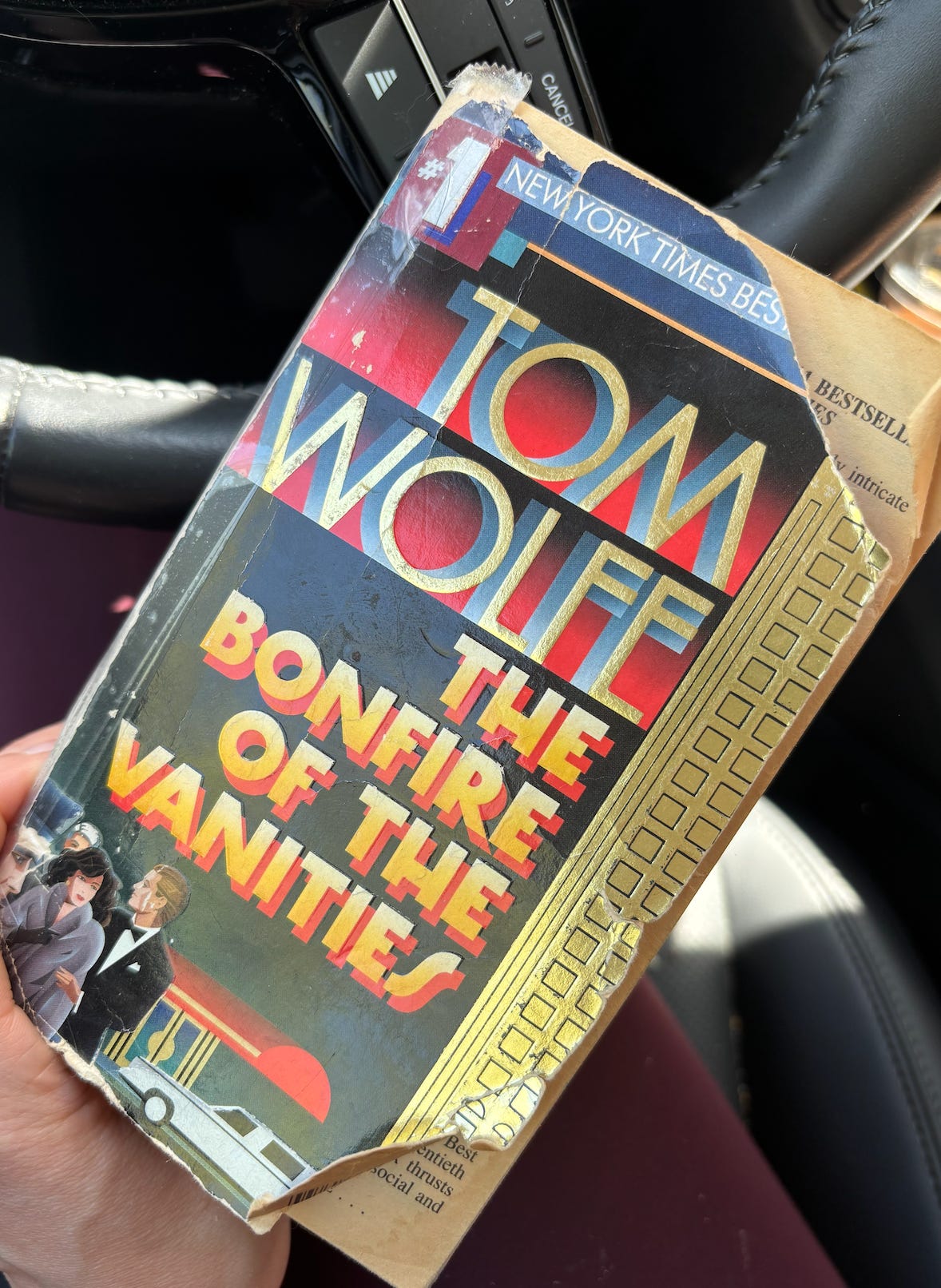Imagine you're a walker-talker stomping around NYC in 2008... or that you're Lorde, in her new music video
An essay on TELEPHONES!
Screenshot of photostream, all photos belong to Jeremiah Moss!
Anytime I’m feeling nostalgic for the world into which I was brought, I either watch The Sopranos, where the scenery of my NJ childhood is miraculously untouched there in the background of every episode, or I click through Jeremiah Moss’s Flickr photostream and delight in the 8,000+ street photos of the NYC of my late teens and twenties.
Moss, the pseudonym of writer/psychoanalyst/social worker/critic Griffin Hansbury, downtown NYer since the early 90s, is an incisive cataloguer of loss: he ran the blog Jeremiah's Vanishing New York from 2007-2022 which he turned into a great book, and still updates its hyperlocal offshoot blog EVGrieve. Moss’s Flickr begins in 2007 and tapers off in 2018, around the time I left for grad school, and bears witness to a city descending into the sunken state that is hyper-gentrification. Dusty and I moved back this winter, after seven years away, and while I do recognize some of the city I left in 2017, it’s a far cry from the city I moved to in 2007. Though Moss would argue that was already the beginning of the end.
Caption: “cell phone rage”
Moss’s Flickr photostream— this archival platform nostalgic in and of itself— is a glorious catalogue of uploaded digital camera photos, mostly untagged and unorganized. While his blogs Vanishing New York and EV Grieve are odes to what’s been lost, his Flickr feels like an intentional celebration of what’s left of a city, at a time when Zombie-esque “walker-talkers”— the term Moss coined for pedestrians on cell phones— began haunting the streets, and ruining the vibe.
Untitled IMG_2282 from Jeremiah Moss’s Flickr account.
What I admire about Jeremiah Moss’s “walker-talker” photos is that he seems more concerned about the survey than the subject, so what has resulted is a sociological study of downtown NY at the turn of the smartphone era. And what a visual treasure trove of a study! These photos are so immersive of this short-lived time, so specific and so intimate, that each time I browse I’m convinced I’m going to see someone I once knew sitting inside the old International Bar, or immortalized as a young dumb walker-talker myself. It goes without saying that these walker-talkers who Moss saw as a scourge upon NYC streets now seem so harmless. These photos are, in hindsight, charmingly anachronistic.
caption: “gotta love a two-fer”
captioned: “orange”
(By around 2013, Moss becomes more concerned with full-throttle iPhone Zombies—and the truly evil iPad zombies, who would be scoffed at or worse even today.)
Captioned: “ipod trifecta! look at all those white wires. and a bonus walker-talker in the back! too bad so blurry.”
What’s funny is that the day I began writing this post (April 25) just so happened to be “National Telephone Day,” which I discovered after seeing this post from Pratt’s Instagram. The guy who designed the telephone is a Pratt alum, who knew?
The serendipity is too much to bear! I realized I couldn’t write this post without also acknowledging the matriarch of the family— the sexy, beautiful, TELEPHONE, mother of the cellular, grandmother of the smartphone.
And thank God I’m on an 80s reading kick, because they loved telephones back then. I finally read Nora Ephron’s Heartburn and now I’m nearly done with Tom Wolfe’s wild and crazy satire BONFIRE OF THE VANITIES, which kicks off with an important telephone scene. Before I get to it, here is a gratuitous photo of my Little Free Library-acquired paperback copy of the novel, which disintegrates in my hands anytime I read it, amplifying the reading experience by reminding me that 1984 was quite a long time ago.
A 41 year old paperback…a beautiful specimen
Wolfe’s—anti-hero? butt of the joke?— is Sherman McCoy, a filthy rich Wall Street bond salesman who is arrested after his mistress hits Henry Lamb, a Black teen from the Bronx, in his Mercedes roadster and drives away, which turns McCoy into a chess piece in a highly politicized trial (the year the novel was published was a particularly grave time in the city’s history). In the very first scene of the novel, McCoy says he’s going out to walk the dog. Instead, he exits his Park Avenue palace and steps into a phone booth to call his mistress— “May I speak to Maria, please?” — but accidentally dials his house. By the time McCoy’s wife’s pissed off voice comes through from the other end of that mouthpiece, he’s already trapped in a prison of his own making: heavy rain pelts outside the phone booth, foreshadowing what will soon unfold.
The telephone was once an objet d’art… a statement… and a place!
“Diane on the pay phone” 1980's City Island, The Bronx, by Ron Terner
One chapter later, Wolfe refers to the things Sherman and his Wall Street coworkers bark into all day as “electric donuts”— the bond salesmen’s mouths are non-stop attached to these mouthpieces as they close deals and gobble up money. Proof that even before the cellular phone, there was already some disdain toward the telephone as a type of black hole that kept your mind preoccupied elsewhere.
Still. The telephone used to be a statement, an object— and the phone booth a place, a setting! Now we just carry around these thin little bricks all the time that you can’t really play with or throw around, because they cost like $1200. They are designed to always be open…and with a screen accessible through voice command, you hardly have to lift a finger to engage with it. Flip phones were the beginning of “carrying the brick,” yes — but they were still hardware you could fiddle with, snap open, and shut in your hand. Instead of scrolling, we once engaged with physical objects; they were both portals to our loved ones/business associates and fidget spinners! I came across this quote from a Kristin Cavalleri interview recently about flip phones that I love, and feels relevant here:
God, do I miss that satisfying flip!
In Franzen’s The Corrections (2001), Denise considers cell phones “the vulgar accessories of vulgar people”— a sentiment totally at odds with why, a quarter of a century later and sick of the scroll, many people are opting to carry one now. We really had nooooo idea how bad things were going to get.
Thank you Allie Wuest for sending! I need to reread now
Anyways, back to the mean streets! Time to discuss Lorde’s much talked about single “What Was That,” which dropped last week and is officially her first #1 hit since her breakout “Royals”. In her new music video, Lorde walks like a bitch (when she was ten someone said that), jumps on an old bike, and gallivants around present-day NY on a cloudy day. The overcast is critical, because it provides mood and matches her button down. Also important to note that there is no phone, smart or otherwise, in sight!
There are, however, a pair of $550 AirPods Max fitted over her ears, which she wears for the first minute of the video— before throwing them into the river and hopping on the bike. Where’s she headed to?! one may wonder, and the answer is her surprise listening party in Washington Square Park from last week.
“As little between us as possible,” Lorde wrote in her Instagram caption announcing the video: “Aliveness over prowess. Naïveté over disenchantment.” Philosophically good stuff here, and a desire to return to a purer time. The song is catchy enough, but the references in the chorus— “MDMA”, “blow our pupils up”, “this is the best cigarette of my life” — all feel Melodrama-era to me—anachronistic in a cringe way. This is just my humble opinion, though: the Lorde comeback has been deemed objectively cool, just like Brat is cool, because cool people approve of her new creative team. But if you ask moi I think it’s missing something…a je ne sais quoi…
A telephone, perhaps? Imagine Lorde stumbling out of a 1999 phone booth into 2025 NYC, or trying to wade through a sea of 2008 walker-talkers, and then getting on the bike. As little between us as possible! That would be infinitely cooler than throwing those AirPods Maxes into the river, because the AirPods imply the existence of an iPhone in her pocket. ✪















Lorde song is still giving “produced by Jack Antonoff” 😭